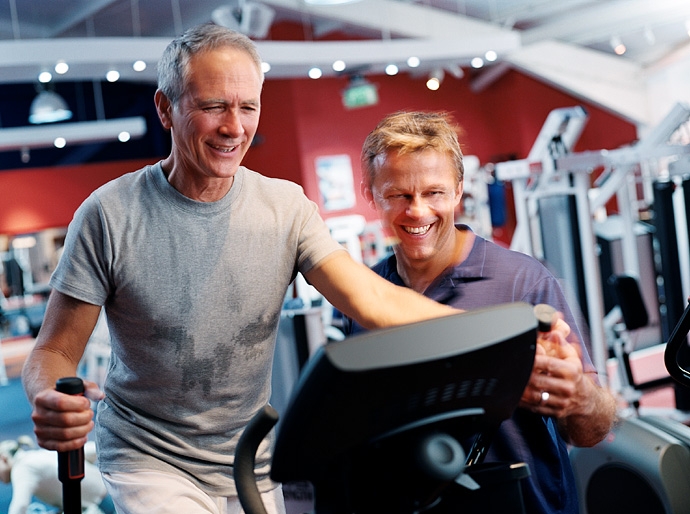By IHRSA
Despite how the U.S. is aging, the pace at which Americans work and play is showing no sign of decelerating. Older Americans (i.e. Baby Boomers) are looking for ways to age well, and regular physical activity has an important role to play in this. As a result, health club programming for baby boomers—strength, balance and functional training—has ranked 2nd on the list of IHRSA’s Top Fitness Trends for 2012.
Regular exercise helps improve a whole lot more than the cosmetic consequences of aging, which are often times “fixed” by short-term solutions, such as risky procedures or pills and lotions that have unsubstantiated claims of the effects. Michael R. Mantell, PhD, Senior Fitness Consultant for Behavioral Sciences at American Council on Exercise, says it best in a guest blog post, Gray is the New Green, in which he discusses marketing programs catered to older adults. When blogging to health clubs, Mantell writes:
“You aren’t in the pseudo-anti-aging businesses of hormone replacement, cosmetic surgery, or skincare treatment. You’re in a business that has staggering amounts of proven, databased research behind it. We know full well that consistent, moderate-to-vigorous exercise will help prevent obesity, diabetes, heart disease, hypertension, high cholesterol, cognitive decline, muscle bone loss, impaired sexuality, and musculoskeletal injuries, among other age-related disabilities, diseases, and functional impairments.”
And Mantell’s right. Research shows that:
- Regular exercise decreases the likelihood of developing arthritis-related disabilities
- Men and women aged 65 and older who exercise have a lower risk of losing mobility
- The fitter you are, the lower your risk of brain function decline
- Fit men have one-third the risk of death from heart disease as women
- Unfit men have a 39 percent risk of death from cardiovascular disease and 44 percent risk of all-cause mortality.
In the years to come, the U.S. is likely to see a significant increase in physical activity programming that is designed especially for seniors and older adults, as well as trainers specially trained and certified to work with older populations. Successful programs, Mantell says, hinge on having a keen understanding of their values and behavior; trainers who can relate to this segment of the population; creating environments that help make older adults feel welcome; and tailoring workouts to strength training, posture, balance and mobility.

“Exercise is one of the most effective forms of primary prevention we have,” says Helen Durkin, Executive Vice President of Global Public Policy at IHRSA, in an editorial in McClatchy News. “The practice of primary prevention — engaging in beneficial lifestyle behaviors, such as regular exercise, healthy eating, avoidance of tobacco and other controlled substances, stress management, and routine medical exams in order to deter the onset of disease — boosts our health and puts older Americans in a better position for fighting off the symptoms of aging,” Durkin writes.
You can’t live forever, but you can live well. With regular physical activity, older adults can reduce their arthritic pain, maintain their mobility, help prevent the onset of dementia and Alzheimer’s, and minimize the limitations of aging far into their senior years.
How are you creating physical activity programming for older adults?